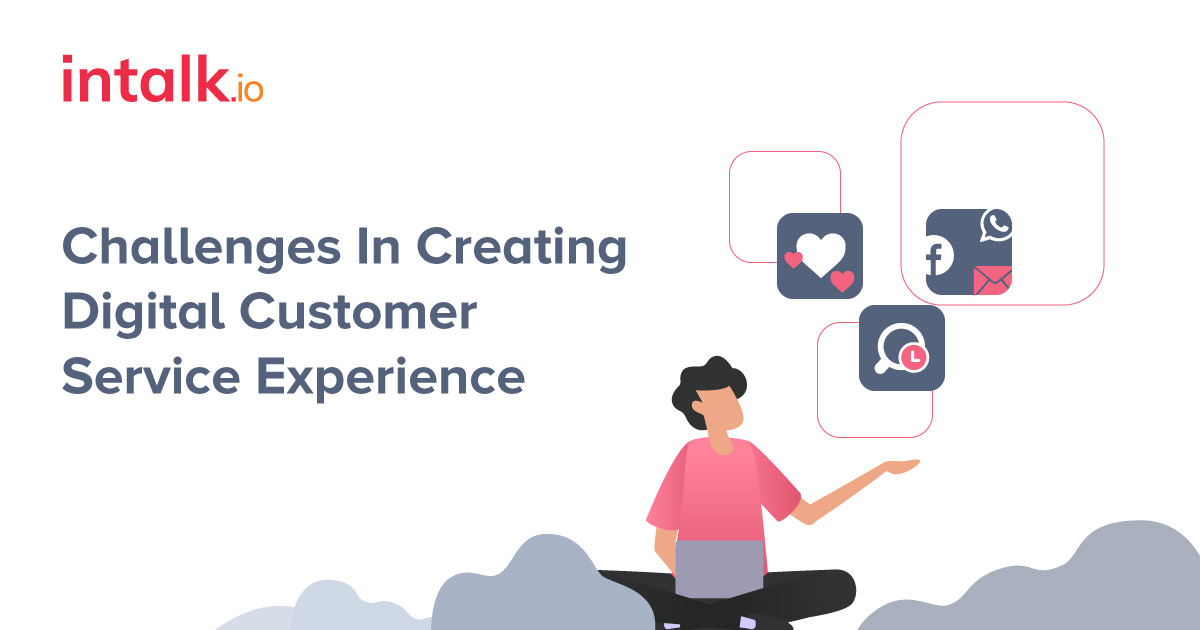Customers want to be served, with an interactive and engaging experience. Customer service is moving to digital channels, and companies should be prepared for the changes. Improvements in technology have driven businesses to improve customer service. To accomplish this, companies must consider customer preferences and ensure they are building a customer-centric culture where customers feel respected and valued.
In today’s world, people want individualised attention which is not only comparable to their peers but also human in nature. This new model of on-demand customer service is turning outdated processes and technologies into a business imperative.
In this article, we will talk about how companies can overcome the challenges of creating a unique and digital customer service experience:
1. Identify your customer preferences
Customers have different expectations for different types of products and services. For example, one customer may prefer a mobile app while another may prefer an inbound call center solution, while another may prefer an online chat option. Identifying these differences helps you create a digital experience that meets each customer’s needs. The first step in creating a digital customer service experience is to remember your customers’ preferences. This can be achieved by analysing data from your current customers and potential customers to determine their needs and wants. Once you know what they want, you can build digital journeys that satisfy those needs.
2. Delivering personalised customer service
Customers want more customised interactions with businesses, which means companies must know their customers well enough to provide relevant messages at the right time. Personalisation works if you have enough data about each customer — including their preferences, interests and buying habits — so you can deliver relevant experiences across all channels. But this can be challenging when dealing with large volumes of data about different customers in different locations worldwide with other preferences and needs. Once you have enough data about each customer and know how they like to interact with your brand online, you can categorise customers into unique segments and create personalised journeys for each segment. Journeys such as bot flow for existing customers based on their purchase history, sending automated notifications to customers whose plan expires in a week, etc., can be personalised for each customer segment.
3. Managing multiple customer communication channels
Customers have multiple ways to contact your business. Thus you need an effective strategy for managing all those communication channels. For example, it could be difficult for your agents to keep track of all the emails coming in from different channels and respond accordingly. The same goes for chat software or social media platforms like Facebook Messenger or Twitter DMs. Thus, businesses must invest in omnichannel platforms that help customer service teams manage multiple channels through a single platform. With intalk.io Intuitive Chatbots, you can automate parts of customer service and make it easier for companies to respond quickly and efficiently across multiple channels.
4. Online Reputation Management
Online reputation management is one of the most challenging tasks for brands. The Internet has a long memory, and people can easily find bad reviews about your company or product. In this case, it is necessary to monitor all information about your brand and ensure that it does not contain any negative information that could affect your company’s reputation.
Online Reputation Management (ORM) is a practice that involves monitoring and responding to online mentions of a brand, product, or individual. By doing so, organisations can lessen the potential damage of a negative online mention or even turn it into a positive one. Its goal is to protect the reputation and brand image of companies and individuals. This can be done through different techniques such as monitoring and responding to reviews, managing comments on social media accounts, identifying fake reviews and removing them. In the digital customer experience, ORM plays a crucial role in protecting and building the brand’s digital identity.
Takeaway
As you look to implement a digital customer service strategy and experience, it’s important to remember that the technology required to do so must work with your employees and customer experience strategy, not for or against it. With that in mind, you shouldn’t be shocked if digital customer service comes with its list of unique challenges. But that doesn’t mean that these challenges can’t be tackled. It involves finding a solution provider who will take the time to listen, understand, and provide a solution that fits your needs.
Book a consultation with our solution expert to implement a full-proof digital customer experience strategy.





